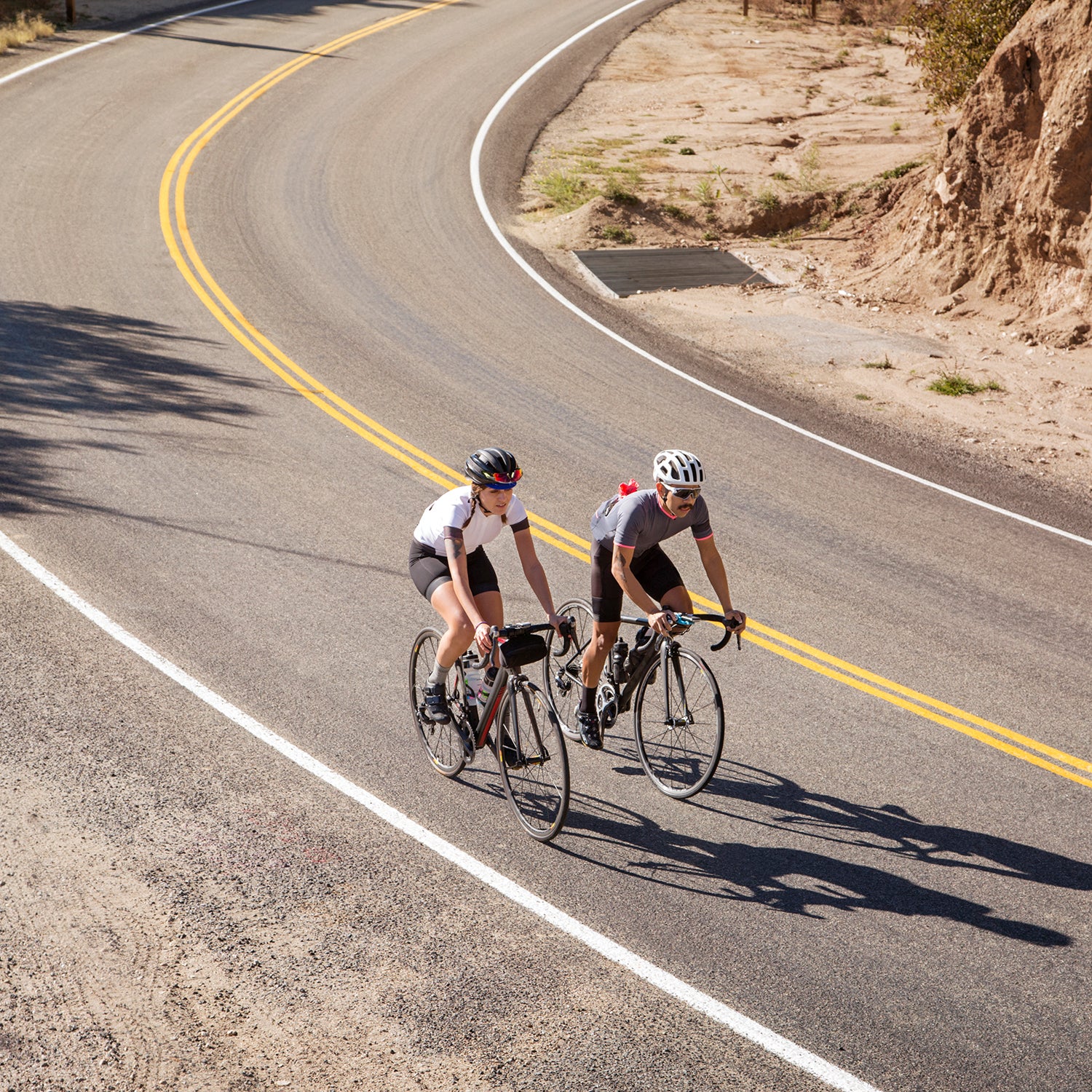Two years ago, Trek Bikes hyped a new line of its Bontrager-brand helmets with a novel impact-mitigation system called WaveCel. It was the latest in a string of rotational-impact-protection features��designed to address rotational energy—in this case, the head violently twisting��or shaking—thought to be a significant factor for brain injury in crashes. The brand as a sort of��advancement the industry only sees every 30 years.��
WaveCel uses a honeycomb structure that both crushes and ��������������ٱ������������on impact to lessen linear and rotational energy. In its marketing, Trek claimed that WaveCel was “up to 48 times” more protective against concussions than conventional, foam-only helmets, citing a . That prompted grumbling from industry competitors, but Trek’s claims went largely unexamined, and the controversy faded.
Then��on January 7, the technology—and Trek’s marketing of it—shot back into view with news of a class-action lawsuit filed against the company. The lead plaintiff, Andrew Glancey, does not claim that he or anyone else was hurt in a crash while wearing a WaveCel-equipped helmet; rather, Glancey��is alleging economic harm, arguing that Trek misrepresented the technology’s capabilities in an effort to justify charging higher prices. When the tech launched in 2019, Trek’s most affordable WaveCel helmet was $150. Nowadays��you can find it��in helmets that cost closer to��$100. In 2019, other helmets with rotational-energy technology started at around $60, with comparable models priced much closer to the WaveCel line. Glancey’s attorney didn’t answer questions about which helmet the plaintiff bought, or when.
The whole thing sounds like a lot of fuss over puffed-up marketing, a commodity in plentiful supply in bike advertising. But the suit may not fade��away quickly. It directly reflects a set of larger problems facing helmet makers. Technological advancements have produced a glut of lids with new safety features, but a mix of regulatory, scientific, and legal issues leave��consumers��with little information about what actually works. That’s the real problem—and one a lawsuit won’t fix. In fact, that��might make it worse.��
Trek’s Claims Were Bold—Maybe Too Bold
The obvious focal point of the suit is Trek’s contention that WaveCel, which it exclusively licenses for bike helmets, can reduce the likelihood of concussion by 48 times (or 98 percent) compared with��foam-only lids. The peer-reviewed study that Trek pointed to as evidence when it first launched the technology does support��that, but the data is more mixed than the claim suggests.
The authors, , reported that the technology reduced the amount of radians per second (rad/s, a measure of angular velocity) in crash testing compared with��both a MIPS helmet��and a helmet without either type of technology. But WaveCel’s performance in terms of lowering brain-injury risk varied from 5��to 48 times better than the foam-only helmet, depending on speed and the angle of impact. More importantly, its performance was only 3��to 12 times better��compared with��the MIPS helmet, depending on those same two factors.��So Trek essentially cherry-picked the most favorable piece of data from the study, added an��“up to” qualifier,��and rolled it out.
In late 2019, that caught the attention of the National Advertising Division (NAD), a��BBB National Programs initiative that monitors consumer marketing for false and misleading claims. “It just raised a question in our minds of whether or not what was being claimed was what consumers would expect to get from the helmet,” says Laura Brett, a vice president��at the BBB National Programs and a former litigator.
In a decision last February, the NAD found the study evidence too thin to support the claim and recommended that Trek . The NAD rulings are voluntary, but Trek complied��and no longer makes the claim. When asked to comment for this story, Trek provided �����ԹϺ��� with a short, previously released public statement saying that it stands behind its helmet technology and would contest the lawsuit.
Part of what made Trek’s 48-times��claim so controversial was that it was—and still is—almost unheard of for helmet brands to make such specific claims about protection. While companies eagerly boast about secondary attributes, like weight or ventilation, they tend to speak about safety only in broad, cautious generalities. “We’ve been looking at bike-helmet advertising for quite a while,” says Brett, “and you don’t see a lot of quantified claims for protection.”
For example, take Giro’s marketing materials for helmets with Spherical, MIPS’s newest technology. The brand it “helps redirect impact forces away from the brain” and offers “an added measure of protection in certain impacts.”��Koroyd, which makes a material found in some Endura and Smith helmets, “is able to reduce the rotation motion which your brain could endure as a result of an angled impact.” The verbiage is squishier than the gray matter it’s��protecting, and the word “concussion” is never mentioned.��
Normally, I’d applaud Trek for making such a specific claim; the problem is, the evidence didn’t back it up. So what stops companies from making concrete safety claims that are better grounded in fact? And why are helmet companies so evasive about how effective their products are at performing their��function? The answer lies partly in the science of concussions��and partly in helmet testing and certification.
Bureaucracy Leaves Us with Outmoded Tests
Helmet testing varies slightly by geographic region, but the��one big regulatory body��for the entire U.S. is the Consumer Product Safety Commission (which is also recognized in Canada, China, and Japan). The CPSC doesn’t perform��its own tests. Instead,��helmet makers simply have to keep records of testing performed at��outside labs or their own facilities��to prove their helmets meet the standard.
The process to become CPSC certified��involves tests��that are largely based on ones created in the 1950s by the Snell Memorial Foundation. They involve fitting helmets with weighted head forms and dropping them onto various shaped and flat anvils from different heights (approximately four��and six and a half feet). Helmets are tested at different impact locations, including��the top, front, and sides.��
The problem is,��the Snell tests were designed simply to assess the likelihood of a skull fracture during��linear impacts at certain��low speeds (11 and 14 miles per hour, respectively). At the time, we didn’t��know how big of a role rotational energy played��in traumatic brain injuries, which are far more common than skull fractures. In short, modern bike-helmet testing accounts for only a fraction��of the types of crashes cyclists experience��and none of��the most common injuries that result. When asked by journalists, representatives from helmet companies readily admit that,��but it’s not exactly a highlight of marketing materials.
The CPSC protocols became mandatory��in 1999 and haven’t materially changed since. And even though MIPS technology debuted in bike helmets almost a decade ago, and��dozens of other rotational-energy systems have since hit the market, none of the certification standards include��tests to measure��them.��
There are a few newer and more comprehensive tests that do, notably the STAR (Summation of Tests for the Analysis of Risk) system devised at . But those are voluntary. And the regulatory issues likely won’t resolve soon either. Over the years, I’ve spoken with some helmet companies that are wary of adding a rotational-energy standard to the test, because there are��disagreements over methodology.��
Tests May Not Reflect Real-World Crashes
Even if helmet makers collectively pushed to add a rotational-energy test to the standards, the CPSC faces another hurdle: a federal law that of any new safety rule. It’s really difficult to do a cost-benefit analysis when you can’t quantify the benefits, which is the case with rotational-energy protection systems.��
That’s because, for as common as they are, no two traumatic brain injuries are totally alike. They can result from a variety of causes, including��explosive blasts, although strongly suggests that ��often a significant role. We also don’t have a definitive way to measure concussions. They won’t show up in medical tests like MRIs or CT scans. Rather, it’s .
Finally, because lab testing reflects only a narrow percentage of real-life crashes, we have little idea about how realistic it��is. Obviously, people crash in all manner of ways and at speeds slower and faster than 11 to 14 miles per hour. But no one’s ever measured those forces in the field. (There is, however, some , led by the Virginia Tech team. Recent data suggests that crashes often occur��in the velocity range covered by impact tests, but that helmets often sustain damage at the brow line, an area that CPSC tests don’t target. This suggests��that we don’t know as much as we need to about how helmets perform where they’re actually hitting the ground.)��
It’s clearly unethical to perform��controlled crash tests with��human subjects. Rapid advances in��crash-detection technology, like in some Garmin computers and Specialized’s ANGI helmet sensor, might pave the way for crowdsourcing data from real-life crashes. But to date, it’s never been done.��Instead��we use an outdated testing standard that relies on dropping a fake, disembodied head to measure linear impacts that don’t reflect the range of crash forces cyclists experience��and that have little relevance to the kind of trauma that causes the most common head injury in the first place.
So What Do We Actually Know About Helmet Safety?
Regulatory testing is pass or fail, which means that even if a helmet far exceeds testing standards, companies feel they can’t highlight relative performances between brands or models. But their circumspection hides that they know a lot that they don’t say. Helmet makers all do their own lab research. And some brands, like Bell, Giro, and POC, have capabilities that far outstrip what’s required for certification testing. Bell and Giro’s fabled Dome facility has been the site of any number of stories and tours for journalists. But concrete examples of the��work��or findings that occur there��are��harder to come by, even on the facility’s .
Companies don’t share that info, in part because of the concern about legal consequences like the ones Trek is facing now. If you say your helmet is better than another helmet, you have to be able to prove it, something that’s very hard to do given��the current framework. And the stakes are high. Concussions are such a focal point of personal-injury suits that there’s an entire monthly journal——devoted to the topic.��
All of which is why��helmet makers will almost certainly continue to be extremely cautious—to the point of evasion—about how they talk about safety. This��makes it hard to know if you should buy a helmet with rotational-energy tech.��There’s evidence () to suggest that it may help in a crash: all 48 helmets with five-star ratings from the Virginia Tech lab have rotational-energy tech, including six WaveCel models. Only one helmet with rotational-impact protection failed��to get at least four stars. (You also don’t need to spend a ton to get one; 13 such helmets with five-star ratings cost��$100 or less.)��
Obviously, there’s a lot we don’t know about helmet safety. And lawsuits, however they pan out, to prompt companies to be more open and transparent about their products. Even without the lawsuit, or others like it, there are plenty��of problems with how things currently work. And maybe the system isn’t salvageable—maybe the regulations are too ossified, the interests too entrenched, the disagreements too sharp. Maybe we need to rethink how we talk about helmets and state more boldly that they aren’t perfect protection��so people don’t have unrealistic expectations. Maybe we’ll finally find a way to figure out what actually happens to the head during a crash��so we can design helmets for the real world, not the lab.��


